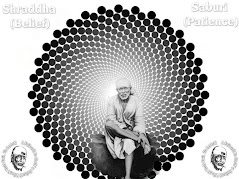
Bhattathiripad, a well educated Brahmin, was afflicted by extremely painful arthritic condition at about the age of twenty seven. Therapeutic efforts failed entirely and by the time he decided to turn to the mercy of the Lord, he was a total wreck, not even able to walk without support. He reached Guruvayoor temple accompanied by his younger brother .
It was then that he had received an advice from the great Malayalam Poet, Thunchathu Ezhuthachan (considered as the "Father of Malayalam Language") to "start with fish",
a composition in praise of The Lord.
The suggestion was that the he should compose a work narrating the various incarnations of Lord Vishnu, Fish, Turtle etc... Melpathur. Bhattathiripad who knew all Puranas so well, straight away embarked on the project, assisted by his brother.
Thus happened Sreeman Narayaneeyam.
It is said the deity eagerly listened to his work daily and responded with occasional comments. He even helped him once by giving a vision of the fierce sight of Narasimhavatara, as the poet could not figure out how the incident was.
Kesathipadham:
The last chapter is a gem of a narration of the deity from head to foot. The legend has it that after 99 chapters Guruvayoorappan had appeared in front of the poet and he was cured of his nagging ailment. Then on the 100th day he wrote about the vision he had.
You can listen here:
001-P Leela-SREE GURUVAYU PURESA SUPRABHATHAM –
02-P Leela-Rasakreeda varnanam & Kesadhi paada varnanam
Narayaneeam:
An ardent devotee of Sri Guruvayurappan, Sri Sengalipuram Anantharama Dikshitar made a significant contribution to propagate the Narayaneeyam of Meppattur Narayana Bhattathiri all over the world today.

About Sengalipuram Anantharama Dikshadar:
VETERANS IN the age group of 75 and above all over the country will remember and recall attending Sri Anantharama Dikshitar's Upanyasams in the Matunga Asthika Samaj and Bhajan Samaj between the early 1940s and Sixties. And avid listeners included the President Dr. Radhakrishnan, Chakravarty Rajagopalachariar, Dr. Rajendra Prasad, and the Governors of Andhra Pradesh, Maharashtra and Tamil Nadu, Kalki Sadasivam and the heads of all Maths including the Kanchi Paramacharya and Sringeri Periayawal various industrialists, musicians and politicians, the members of the royal houses of Kozhikode, Kochi, Kollengode, Thanjavur and Pudukottai.
For more than 30 generations, every member in his family had performed yagna, especially Agnihotram, and attained the title of Dikshithar. All of them were well versed in the Vedas, Puranas and Ithihasas and Sasthras. To them goes the credit of introducing the Upanyasam style into our culture.
Born in August 1903 in Thanjavur district as the first son to Sri Subramanya Dikshithar , boy Anantharaman was initiated into the learning of the Vedas under his father and grandfather Muthannaval.
He learnt other Sastras and Vedangas from eminent scholars of repute including Kadalangudi Natesa Sastrigal who also was his father in law.
The family has taken pain and efforts to bring out more than 200 audiocassettes of the great Yathenndrals upanyasams held in 1950s and 1960s in various places like Bombay, Madras Pudukkottai, etc.
A spellbound audience used to sit and concentrate for three hours, during his discourses. His chanting Dhyanaslokas, Vedic Mantras, Sasthram in Rig Veda recited during Yagas, slokas from the puranas, Itihasas and Dharma Sasthras was inimitable. Dikshithar used to narrate the importance of rituals in his daily Upanyasams. He had great respect for scholars and purohits.
His lectures on the Maha Bharatha or Srimad Bhaghvatham, Srimad Ramayanam, Skandam, Sri Devi Bhaghavatham, etc., were unique.
He has been conferred the following Titles:
• Amrutha Vaakvarshi
• Upanyasa Chakravarthi
• Vaidheeka Dharma Samrakshaka
• Pravachana Dhureena
• Vedha Yaaga Paripaalaka
• Raamayana Thathvopadesaka
• Ramaayana Kesari
• Bharatha Simham
• Pravachana Vaakeesa
• Sruthi Saakaram
Guruvayur-Why it is named so:

Guruvayur
Why it is named as Guruvayur?
Known as the ‘Dwaraka of the South', Guruvayur temple has very interesting traditions around it. The idol of Sri Krishna at Guruvayur is believed to be an ancient one, which was being worshipped by Brahma himself at Dwaraka. After the pilgrim city of Dwaraka became submerged in the sea, Sri Krishna decided to leave His mortal body at Prabhasa Kshetra in Sourashtra for His heavenly abode. According to tradition, it is believed that Sri.Krishna Himself gave his idol which was at Dwaraka, to His foremost disciple and devotee, Uddhava to be installed in a safe place.
As instructed by Sri.Krishna, Uddhava sought the help of Guru, the preceptor of the Gods and his disciple Vayu, the God of Winds, in finding an equally holy spot for installing the idol of Krishna . After a long quest for a most suitable site, they entered Kerala, which had been created by Parasurama. They approached Shiva and Parvathi who were staying near a beautiful lake of lotus flowers in Kerala, called Rudra Tirtha. As suggested by Shiva and Parvati and by their blessings, the idol of Krishna was duly installed at the spot beside the lake. As the site was selected by Guru and Vayu, the place came to be called as “Guruvayupura”, which later on became popular as ‘Guruvayur'. Krishna was lovingly called as 'Guruvayurappan' or the Lord of Guruvayur. Shiva and Parvati stayed on the opposite bank of the lake, which came to be called as Mammiyar, where a Shiva temple has now been constructed. It is believed that he original shrine of Krishna at Guruvayur, according to mythology, was built by Vishwakarma, the celestial architect at the instance of Guru and Vayu.
Listen to the Song.
Ms. Smitha Madhav-Guruvaur Appane-Ambhujam krishna





2 comments:
Can u pls upload Mahabaratham & Narayaneeyam discourse by Anandarama Deekshitar pls
regards,
Anand.
can u pls upload Mahabaratham & Narayaneeyam discourse of Sengalipuram Anandarama Deekshitar Pls.
Post a Comment